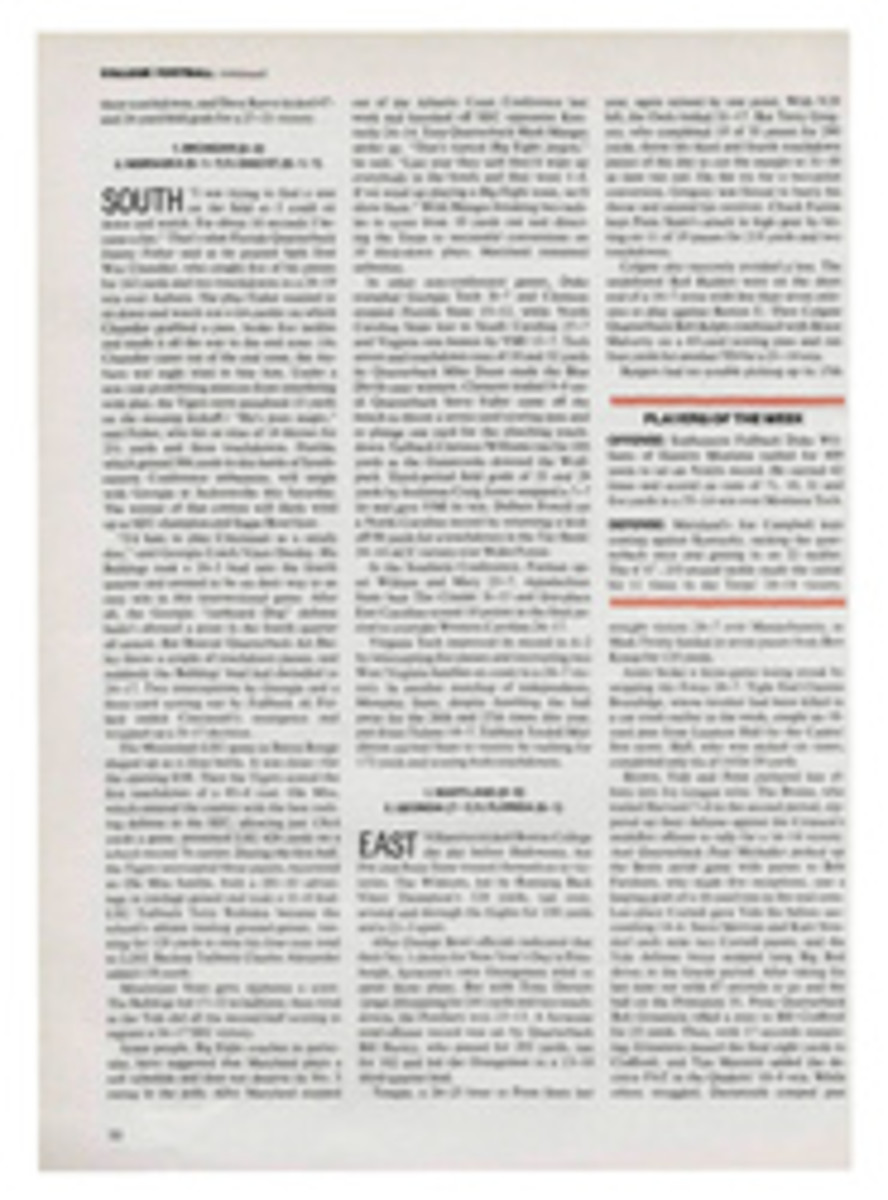
A MAN WHO HAS BEEN TO THE TOP VIEWS THE CHILLING BEAUTY OF MOUNTAINS
A mountaineer, according to Chris Jones, is someone "not content to view the mountains from a distance, who is compelled up into them." Whether or not you feel the same compulsion, Jones' Climbing in North America (University of California Press, $14.95) is exhilarating reading. The book is an exhaustive study of the history of climbing on this continent. Between the first recorded ascent of Pikes Peak in 1820 ("no more than rough hiking") and the best-publicized climb in recent years—Warren Harding's and Dean Caldwell's 27-day saga on the face of Yosemite's El Capitan in 1970—Jones introduces us to such friendly spots as Forbidden Peak, Retribution and Crack of Despair and the men who eventually conquered them.
An experienced climber, Jones has undertaken a massive research job, and the results are impressive. He tells of the early climbers who always claimed their peaks to be the highest on the continent and gave out greatly exaggerated estimates of their heights. (It wasn't until 1897 that Mt. McKinley, 20,320 feet, was firmly established as the tallest.) There are also accounts of all the important first ascents, followed by details of new routes, solo climbs, winter ascents and speed records.
Jones' style is as lean and hard as the men he describes. The book's spectacular black and white photographs underscore the frightening beauty that Jones often leaves to the imagination in his text. The mountain is depicted as a friendly adversary, simultaneously forbidding and inviting, and Jones speaks of a peak's "defenses" in tones of respect.
A fascinating debate between "free" and "aid" climbing weaves through the book. Just how much help in the way of pitons, bolts, extra ropes and adhesives is sporting? One climber snorts, "Supposing it was the regular thing...to use pitons on climbs, would it not be a sign of the degeneracy of man?"
The reader may well find himself wishing there was a glossary of mountaineering terms, a map of all the important peaks and a list of key ascents and their dates. But even without these aids, Climbing in North America is the definitive work on the subject. And it goes a long way toward explaining the strange, almost mystical emotions that send men scrambling toward the heavens. Jones quotes climber Ax Nelson: "Danger must be met—indeed it must be used—to an extent beyond that incurred in normal life. That is one reason men climb; for only in response to challenge does man become his best."

